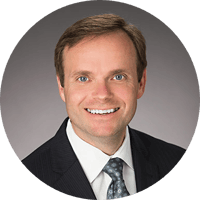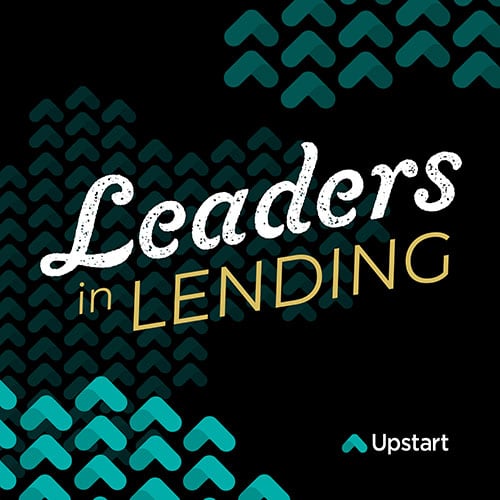Leaders in Lending | Ep. 71
Creating a Mission-Led Credit Union Fostering Financial Wellness
Brian Vannoy, Chief Credit and Risk Officer at Allegacy Federal Credit Union, describes Allegacy's unique approach to both direct and indirect auto lending as well as personal lending, and how they create opportunities to influence their members’ lives for the better.


GUEST SPEAKER
Brian Vannoy
Brian Vannoy is the Chief Credit and Risk Officer at Allegacy Federal Credit Union. He is responsible for the management of Mortgage, Commercial Business Services, Corporate Real Estate, Security, Enterprise Risk Management, Account Management, Retail Lending and Legal + Compliance. He also leads Allegacy’s focus on Small Business Banking and lending needs for members along with serving as executive sponsor for the credit union’s diversity, equity and inclusion efforts. Vannoy joined Allegacy in July 2015 and has almost 30 years of financial services experience. He graduated Summa Cum Laude from Marietta College in Ohio with a Bachelor of Arts in economics and finance, where he was also a McDonough Scholar. He has completed graduate coursework in business and finance at West Virginia University and at the University of Pennsylvania through the Stonier Graduate School of Banking.

ABOUT
Allegacy Federal Credit Union
For 55 years, Allegacy has helped its members, employees + the communities it serves 'Be Their Best' by helping people make smart financial choices. By doing right, Allegacy has become one of the largest credit unions in North Carolina serving over 166,000 members worldwide with more than $2 billion in assets and an additional $1.6 billion in assets under management in its financial planning group. With roots in Winston-Salem, Allegacy has 17 locations and nine high school student-run credit unions. Allegacy offers personal and business financial services to help a broad membership base including the employees, retirees, and families of over 1,800 companies throughout the country.
Key Topics Covered
- Allegacy’s unique approach to both direct and indirect lending
- The use of a network of point of sale relationships to offer better rates for members
- Techniques to foster greater financial well-being for members
- Creating a mission-led organization

“The value proposition that we bring to our dealer relationships is cash flow. We’re quick to fund and we don't have to overpay with regard to incentives.”

“We are figuring out the best approach for employing artificial intelligence and machine learning, with the goal being — how do we create opportunities for our people to engage in full conversations?”

“At what point do we run the risk of reducing humans to five or ten scores? Some of our innovations have been around tying financial metrics to physical metrics.”
EPISODE RECAP & SUMMARY
Credit unions are dedicated to not only serving their members’ financial needs, but to helping their members foster long-term financial wellness.
Our guest today, Brian Vannoy, Chief Credit and Risk Officer at Allegacy Federal Credit Union, describes Allegacy’s unique approach to both direct and indirect auto lending as well as personal lending, and how they create opportunities to influence their members’ lives for the better.
Allegacy’s unique approach
Vannoy, who has decades of experience in banking and, specifically, credit risk management, explained that one of the main aspects that sets Allegacy apart from other credit unions is its innovative approach to direct and indirect lending.
Not only does Allegacy complete all its indirect lending entirely in-house, the credit union also specifically handles indirect auto loans in a unique manner.
Instead of pursuing indirect auto loans within its core markets, Allegacy utilizes digital channels to let car shoppers know that they offer pre-approval and preferential rates in its financial centers.
Using point-of-sale relationships to offer better rates
Another important distinction of Allegacy is the fact that it has a significant network of point-of-sale relationships with a variety of organizations, including car dealers, medical providers and home improvement companies, who offer advantageous unsecured term products for Allegacy members.
Plastic surgeons, for example, can provide advantageous rates for elective surgeries that may not be covered under secured lending programs.
So by offering point-of-sale financing, Vannoy said Allegacy members are able to put big investments like a surgery or home renovations on a scheduled repayment plan, and are ultimately given the opportunity to make smart financial decisions.
Fostering greater financial well-being
Because Allegacy’s mission is to foster financial well-being for its members, the credit union seeks to focus on other components that contribute to general well-being like social health, mental health and emotional health.
Vannoy explained that these components are the “cogs in the wheel” of well-being, and money is the grease; financial strains always result in physical, social and emotional tension, as well.
The aim, he said, is to create opportunities for Allegacy to extend beyond the realm of just financial well-being by ensuring that money is not the source of household stress and that members have enough cash to meet their long term financial goals.
Allegacy is also looking to the future by exploring the use of artificial intelligence and robotic process automation to influence people’s lives for the better by helping members improve and monitor credit scores on a statistical level.
Creating a mission-led organization
To further promote this idea of financial well-being, Vannoy said Allegacy is committed to having a sense of member-focused purpose that permeates the entire organization.
For example, the Allegacy team frequently comes together for recognition activities in which the staff will share instances where they have had a positive impact on the lives of credit union members.
Vannoy said the main point is to make sure that everybody is completely engaged in making a difference for the members of Allegacy.
The credit union also focuses its performance evaluations on four core behavioral pillars: serving, caring, collaborating and growing. These pillars are then broken down into tangible situations – like putting others’ interests before your own – that are expected to be enacted on a daily basis.
As part of its pledge to be a mission-led organization, Allegacy has even provided various incentives to help members boost both their financial and physical well-being.
The organization’s health savings account program, for example, will help members earn a higher dividend rate on their savings account just by visiting their local YMCA to work out.





